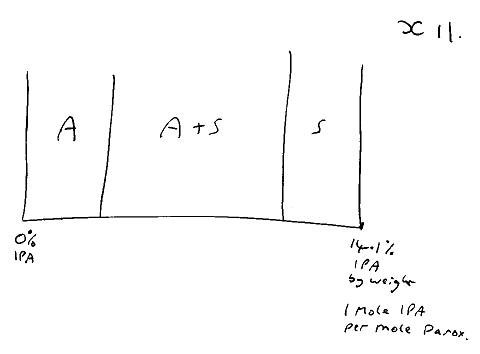
When someone presents you with a graph, in this course, or in a scientific lecture or paper, or anywhere, you must make absolutely sure at the very outset that you understand what the axes denote. Once you become sensitized to this obvious necessity, you will be amazed at how often the axes are vaguely labelled, or not labelled at all. If you are not certain what the axes are, you should never feel shy about asking.
Here is an example taken from the transcript of cross examination in a recent case before the Patents Court in the Chancery Division of the Royal Courts of Justice in London.
The scene opens with the barrister introducing
into evidence his hand-drawn sketch of a "phase diagram".
Barrister. Professor, can I hand up another one of my simple sketches. I do not know if it found its way into the bundle.
JUDGE: It is X9, I think, or have we hit 10? Yes, it is 11.

Barrister. I am told it is X11. Again, this is one of my little sketches. I am sure I have done it all wrong, but in my mind it is a sort of a phase diagram. Let me explain. Along the line, the X axis, I have got the 0% IPA, and by 0, I mean 0.00% IPA on the left.
Chemist. Yes.
Barrister. I have 14.1% by weight of IPA on the right which represents one mole of IPA per mole of paroxetine.
Chemist. Right.
Barrister. As I understand it, we both agree that when it is 14.1% by weight IPA, one mole, it is the solvate, and I have written the word "S" in that region of the phase diagram and when it is ----
Chemist. What is the vertical axis?
Barrister. Frankly it is anything you want it to be.
JUDGE: It is a box.
Chemist. It is actually a line, not a graph in other words.
Barrister. Absolutely.
"Anything you want it to be" is not an informative label for an axis, and such an answer should put one on guard that there may not be much substance to whatever is being presented.
Always insist on knowing what the axes are. It is just possible that what is being presented is nonsense, and that any frustration from failing to understand is not your fault.
|
|
|